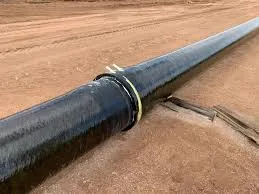
-
 Afrikaans
Afrikaans -
 Albanian
Albanian -
 Amharic
Amharic -
 Arabic
Arabic -
 Armenian
Armenian -
 Azerbaijani
Azerbaijani -
 Basque
Basque -
 Belarusian
Belarusian -
 Bengali
Bengali -
 Bosnian
Bosnian -
 Bulgarian
Bulgarian -
 Catalan
Catalan -
 Cebuano
Cebuano -
 China
China -
 China (Taiwan)
China (Taiwan) -
 Corsican
Corsican -
 Croatian
Croatian -
 Czech
Czech -
 Danish
Danish -
 Dutch
Dutch -
 English
English -
 Esperanto
Esperanto -
 Estonian
Estonian -
 Finnish
Finnish -
 French
French -
 Frisian
Frisian -
 Galician
Galician -
 Georgian
Georgian -
 German
German -
 Greek
Greek -
 Gujarati
Gujarati -
 Haitian Creole
Haitian Creole -
 hausa
hausa -
 hawaiian
hawaiian -
 Hebrew
Hebrew -
 Hindi
Hindi -
 Miao
Miao -
 Hungarian
Hungarian -
 Icelandic
Icelandic -
 igbo
igbo -
 Indonesian
Indonesian -
 irish
irish -
 Italian
Italian -
 Japanese
Japanese -
 Javanese
Javanese -
 Kannada
Kannada -
 kazakh
kazakh -
 Khmer
Khmer -
 Rwandese
Rwandese -
 Korean
Korean -
 Kurdish
Kurdish -
 Kyrgyz
Kyrgyz -
 Lao
Lao -
 Latin
Latin -
 Latvian
Latvian -
 Lithuanian
Lithuanian -
 Luxembourgish
Luxembourgish -
 Macedonian
Macedonian -
 Malgashi
Malgashi -
 Malay
Malay -
 Malayalam
Malayalam -
 Maltese
Maltese -
 Maori
Maori -
 Marathi
Marathi -
 Mongolian
Mongolian -
 Myanmar
Myanmar -
 Nepali
Nepali -
 Norwegian
Norwegian -
 Norwegian
Norwegian -
 Occitan
Occitan -
 Pashto
Pashto -
 Persian
Persian -
 Polish
Polish -
 Portuguese
Portuguese -
 Punjabi
Punjabi -
 Romanian
Romanian -
 Russian
Russian -
 Samoan
Samoan -
 Scottish Gaelic
Scottish Gaelic -
 Serbian
Serbian -
 Sesotho
Sesotho -
 Shona
Shona -
 Sindhi
Sindhi -
 Sinhala
Sinhala -
 Slovak
Slovak -
 Slovenian
Slovenian -
 Somali
Somali -
 Spanish
Spanish -
 Sundanese
Sundanese -
 Swahili
Swahili -
 Swedish
Swedish -
 Tagalog
Tagalog -
 Tajik
Tajik -
 Tamil
Tamil -
 Tatar
Tatar -
 Telugu
Telugu -
 Thai
Thai -
 Turkish
Turkish -
 Turkmen
Turkmen -
 Ukrainian
Ukrainian -
 Urdu
Urdu -
 Uighur
Uighur -
 Uzbek
Uzbek -
 Vietnamese
Vietnamese -
 Welsh
Welsh -
 Bantu
Bantu -
 Yiddish
Yiddish -
 Yoruba
Yoruba -
 Zulu
Zulu
grp chimney
The Influence of GRP Chimney Systems on Modern Architecture
In the realm of construction and architecture, the materials we choose can profoundly influence both the functionality and aesthetic appeal of a building. One such material that has gained significant traction in recent years is Glass Reinforced Plastic (GRP). GRP chimney systems, in particular, have emerged as a progressive solution for modern buildings, offering a range of benefits that traditional materials often fail to provide.
What is GRP?
Glass Reinforced Plastic, commonly referred to as fibreglass, is a composite material made from a polymer matrix reinforced with glass fibers. This combination results in a lightweight yet incredibly strong material that is resistant to corrosion, heat, and a variety of environmental factors. These properties make GRP an attractive choice for various applications, including the construction of chimney systems.
Advantages of GRP Chimney Systems
1. Durability and Longevity One of the primary advantages of GRP chimneys is their durability. These systems are not susceptible to rust or corrosion, unlike their metal counterparts. This characteristic is particularly important in environments exposed to harsh weather conditions or industrial emissions. As a result, GRP chimneys can have an extended lifespan, reducing the frequency of replacements and repairs.
The Influence of GRP Chimney Systems on Modern Architecture
3. Resistance to Chemical Damage GRP chimneys exhibit excellent resistance to a variety of chemicals. This property is especially beneficial in industrial settings, where emissions may contain corrosive agents. The ability of GRP to withstand such exposure without degradation makes it ideal for a broad range of applications.
grp chimney

4. Thermal Insulation Effective thermal insulation is crucial in chimney systems to maintain optimal flue gas temperatures and prevent condensation. GRP materials provide excellent insulation, helping to enhance the overall energy efficiency of a building.
5. Design Flexibility The versatility of GRP extends to design considerations. It can be molded into various shapes and sizes, allowing architects to incorporate innovative and aesthetically pleasing chimney designs. This flexibility not only meets functional requirements but also complements the overall architectural vision of a project.
Environmental Considerations
In an era where sustainability is a priority, GRP materials can contribute positively to eco-friendly building practices. Given that GRP chimneys can reduce maintenance needs and have a longer lifespan, they minimize waste generated from frequent replacements. Additionally, the energy-efficient properties of GRP systems can help lower a building's overall carbon footprint.
Applications in Modern Buildings
GRP chimney systems have found their way into a multitude of modern constructions. From residential homes to commercial buildings and industrial facilities, these chimneys serve a crucial role in effective ventilation and safe exhaust of gases. Their ability to integrate seamlessly into various architectural styles makes them a favored choice among architects and builders alike.
Conclusion
In conclusion, GRP chimney systems represent a significant advancement in construction materials, combining strength, durability, and aesthetic versatility. As more architects and builders recognize the benefits of this innovative material, it is likely that GRP chimneys will continue to gain popularity in the architectural landscape. Embracing such materials not only enhances the longevity and functionality of a building but also aligns with contemporary demands for sustainability and design excellence.









